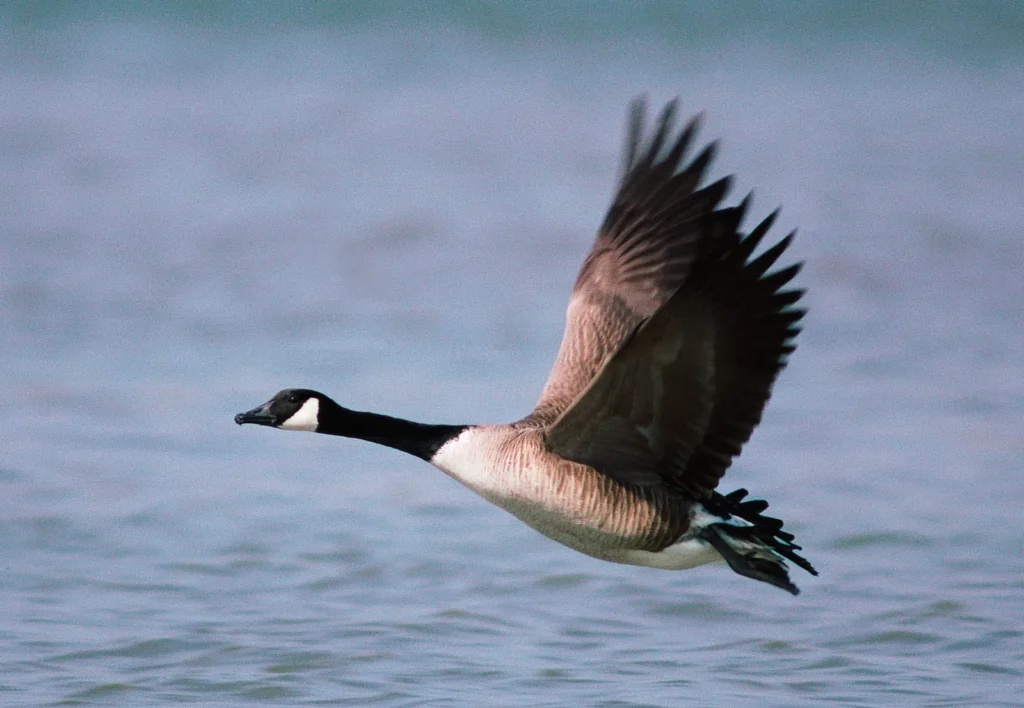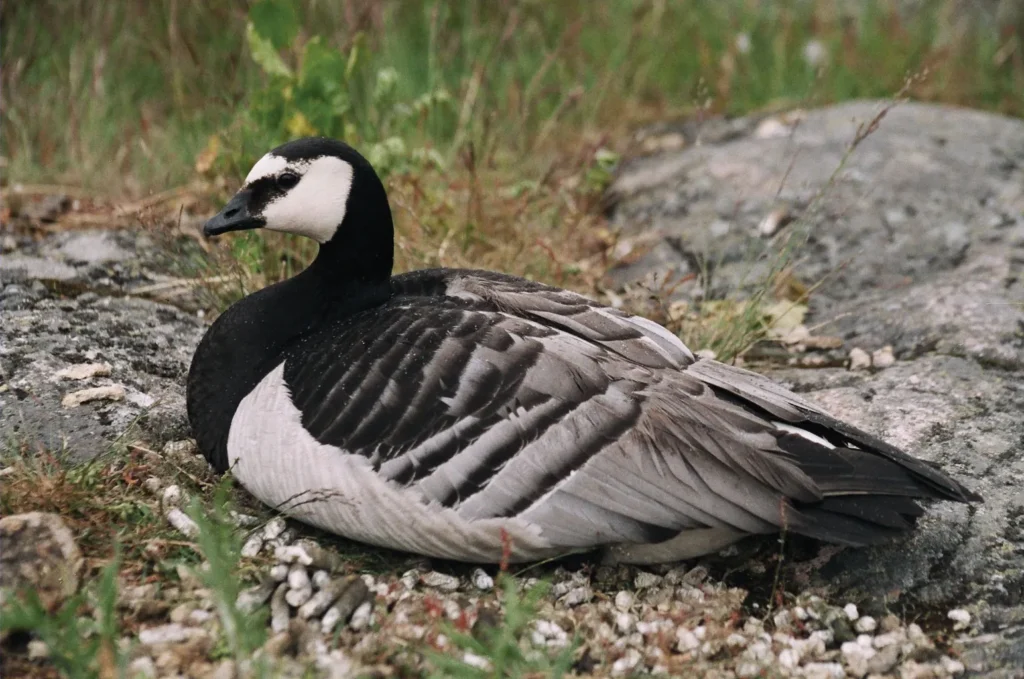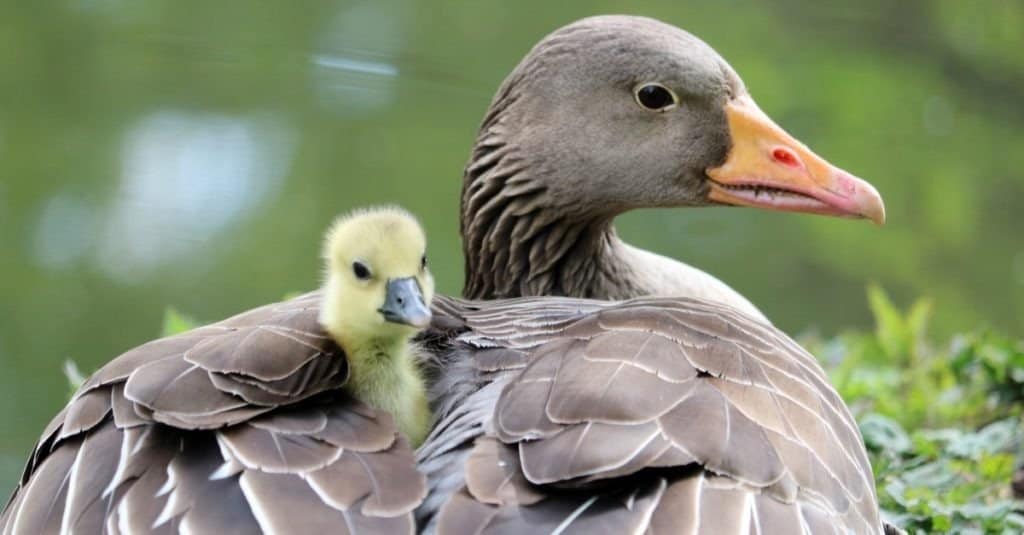What Is Goose Day: Michaelmas Day is celebrated every year on September 29. It is also known as National Goose Day, and it has historical meanings related to the Archangel Michael. In the past, the event happened on the same day as rent day in medieval England, when geese were often sold for money. As a tribute to this tradition, people would give their owners a goose under the arm when they settled their bills. On National Goose Day, you can eat roast goose, which is a great meal that comes from the time when geese were more widely eaten.
On this happy occasion, people are encouraged to enjoy the culinary practice of a soft roast goose, which makes them feel nostalgic and happy. National Goose Day is a great time to honor the historical connections and culinary delights that go along with this bird friend, whether you celebrate with traditional feasts or more modern versions.

History of National Goose Day
The Egyptians were some of the first people to keep geese as pets about 3,000 years ago. Experts caught thousands of these birds, kept them in cages, and carefully bred them for meat and eggs. Rich traders and nobles were the only ones who ate goose meat because it was thought to be a treat.
A story about St. Martin of Tours and his relationship with geese grew in France in the fourth century. Martin was made a bishop even though he didn’t want to be one. On the day of his meeting, he locked himself in a barn so he wouldn’t have to do this. The screaming of geese in the barn revealed where he was hiding, which made it possible for him to be recognized as a bishop in the year 327. People who are Christian used to eat geese on November 11, St. Martin’s Day.
In the United States, Goose Day began in the Juniata River Valley in Pennsylvania. In 1786, Andrew Pontius, who was Dutch, hired Archibald Hunter, who was English. Their job contract said that payments were due on September 29. That day, Hunter gave Pontius his reports and a goose. He said that geese were good charms for the coming year. This set the stage for the American practice of Goose Day. Since 1976 and 1973, Juniata and Mifflin counties have officially celebrated Goose Day. International Happy Goose Day is held every year on September 29.
National Goose Day Activities
Prepare a goose
The taste of roast geese is strong and gamey, like the taste of dark meat like beef. Now is a great time to give it a try.
Use bird eggs to make omelets.
The taste and size of goose eggs are better than those of chicken eggs. A tasty treat is a goose egg pancake.
Giving and getting are the same thing.
Serve your friends, family, and coworkers some tasty goose meat. It will make them happy, and you’ll get to show off this beautiful bird to someone else.
Why We Love National Goose Day
Farmers often joke that geese are like “pigs of the air,” implying that they are animals that are used for food. This difference makes the meat juicy and tender, so it doesn’t need any extra sauce.
People think that goose meat tastes different because the birds store the flavors of the food they eat in their fat. Black Brant breeds, which are fed eelgrass or wild celery, are especially sought after for this reason, especially on the West Coast.
If you want to eat something different and tasty, try geese instead of chicken or turkey next time.
National Goose Day timeline
Around 3,000 years ago, the ancient Egyptians were one of the first groups of people to keep geese as pets.
In London in the 1600s, geese became a popular Christmas dish.
A Christmas Carol by Charles Dickens tells the story of Ebenezer Scrooge’s offer of a chicken for Christmas dinner in 1843.
Based on George Dodd’s “The Food of London,” by 1856, more geese than turkeys (888,000 per year) were being sold. This information shows how popular geese were as a food in London during that time of history.
How to Observe Goose Day
The counties of Mifflin and Juniata are great places to be on Goose Day because there are lots of fun things to do. Goose specials are being served at local restaurants, and there is a yearly race to add some exercise to the fun. Read the following information to learn more about the things that are happening in the neighborhood.
People who don’t live in the area can still join in the fun by eating a delicious goose dinner. You could add some fun to the day by reading your kid’s well-known Mother Goose baby rhymes or playing a lively game of “Duck, Duck, Goose.” It’s a great way to remember Goose Day and get into the spirit of the party to follow these fun traditions, whether they involve tasty treats or happy activities.

Who celebrates goose day?
With roots dating back to 1786, Goose Day has been a tradition in the Juniata River Valley and is officially celebrated in both Mifflin and Juniata Counties on Sept. 29 each year.
Geese Day is marked on Michaelmas Day (September 29), and according to a story, people who eat a goose feast on this day will be rich and successful all year. Those who live in the Juniata River Valley still eat geese that are raised in small groups by Amish herders. Pope Gelasius made St. Michaelmas Day a holiday in 487. It became a medieval celebration, and landlords would often collect rent on this day.
This happened because Michaelmas fell during the fat season for wild geese. Farmers could pay part of their debts with a goose, and renters could give a goose along with their rent to encourage the landlord to continue their lease. The famous roast goose became the main dish at the Michaelmas feast, which is still held as a tradition and community event in the Juniata River Valley.
Goose Day has been a beloved practice in Mifflin and Juniata County since the early 1900s, even though its religious meaning has faded. It is now a county holiday, and people celebrate it on September 29 to bring luck and wealth into their lives in the coming year.
What is goose day Mifflin County?
September 29th
The Goose Day legend promises that a goose eaten on Michaelmas Day (September 29th) ensures wealth and prosperity all year round.
The Goose Day myth says that eating goose on September 29 will bring you wealth for the rest of the year. People who follow this tradition are very excited about it. On September 29, they eat a goose feast because they believe it will bring them wealth and happiness in the coming year.
History buffs will be interested in Goose Day because it is connected to St. Michaelmas Day, which Pope Gelasius made a holiday in 487. At first, the ritual had to do with landlords collecting rent every three months. Over time, it grew to include the idea that this time of year is when wild geese are at their fattest.
Folklore says that farmers would sometimes use a goose to pay off some of their debts, and renters would often include a goose with their rent in order to get their lease renewed. As a result, roast goose became the traditional food for the Michaelmas feast. This practice lives on in the Juniata River Valley, especially in Mifflin and Juniata County, where it has grown into Goose Day.
Even though the religious connection to the tradition has faded, it is still celebrated every year. Since the 1970s, Goose Day has been a recognized county holiday, meaning a day of eating and wealth.
Why is goose day celebrated?
Also known as Michaelmas Day, the holiday initially celebrated the Archangel Michael but later became associated with geese because the date coincided with rent day in medieval England. Geese were a common form of payment, and many a citizen paid off their landlord with a goose tucked under their arm.
Goose Day began in 1786 in the Juniata River Valley in Pennsylvania. It is most famous in Mifflin County, where it has been officially observed since 1973, and in Juniata County, where it has been observed since 1976. The story behind this one-of-a-kind holiday comes from the Christian holiday of Michaelmas, which honors the archangel Michael and is often celebrated by eating goose.
At the start of the story, Andrew Pontius, a Dutchman, hires Archibald Hunter, an Englishman. In their 1786 contract, it said that the debts would be settled every year on September 29. Hunter not only turned in his accounts on time, but he also had a goose folded up under his arm. Pontius was confused and asked what it all meant. Hunter told him that the geese stood for good luck for the next year, based on his memories of enjoying Michaelmas in England. This meeting marked the start of Goose Day, a local holiday that combines superstitions and ethnic customs.
Why do people say goose?
If someone calls you a goose, it’s mildly insulting: they’re saying you’re silly. Many other common phrases use goose, including “a wild goose chase,” which means a hopeless pursuit or waste of time, and “your goose is cooked,” which translates to “you are in big trouble!”
The word “goose” is often used in a lot of different ways that mean different things. It’s generally considered rude to call someone a goose, as it implies that they think you are stupid or dumb. Many everyday sayings use the word “goose” in them, like “a wild goose chase,” which means an unnecessary or useless activity. When someone says, “Your goose is cooked,” they mean that you are in a lot of trouble or that something bad is about to happen. These figurative uses of the word “goose” show how language uses the traits and actions of these birds to convey different meanings in everyday speech.
When did goose Day start?
Goose Day was unofficially started in 1786 in Pennsylvania in the Juniata River Valley, and has officially been celebrated in Mifflin County since 1973, and Juniata County since 1976. It stemmed from Michaelmas, a Christian holiday celebrating the archangel Michael, and a day when geese are often eaten.
On September 29, 1786, Archibald Hunter, a young Englishman, settled his debts with Andrew Pontius, his wealthy owner from Pennsylvania. When Hunter gave his story, he was carrying a goose, which made Pontius confused. Hunter talked about how people in England eat geese on September 29 (St. Michaelmas Day) to bring good luck.
People who live in the Juniata River Valley have carefully kept this old custom alive for years by having goose feasts in the hopes of being rich and successful the next year. The party has grown over the past few years, with more events and activities happening all over the two-county area. Because of these events, Goose Day is a great time to learn about and enjoy the lively culture of the Juniata River Valley in the fall.

Archibald Hunter and Andrew Pontius started Goose Day in 1786. It has become a beloved event in the Juniata River Valley. People still eat goose on September 29 because they think it will bring them wealth in the coming year. In the 1970s, it started as a small gift between friends. Now, it’s an official county holiday in both Mifflin and Juniata counties.
This cute event, which is based on St. Michaelmas Day in England, shows how culturally diverse the area is. Over the years, Goose Day has changed from a symbolic feast to a lively neighborhood get-together. In the past few years, a wider range of events and activities have added new dimensions to this long-standing custom. Goose Day is a celebration of both history and the community’s lively energy and friendship in the Juniata River Valley.



